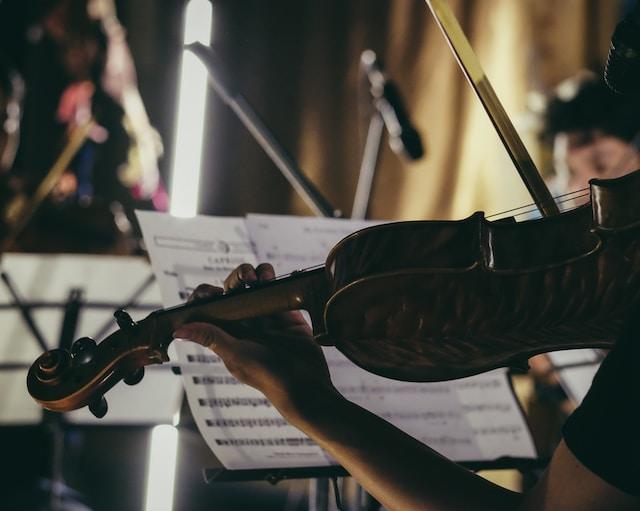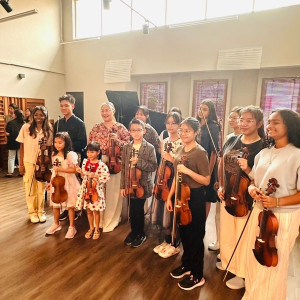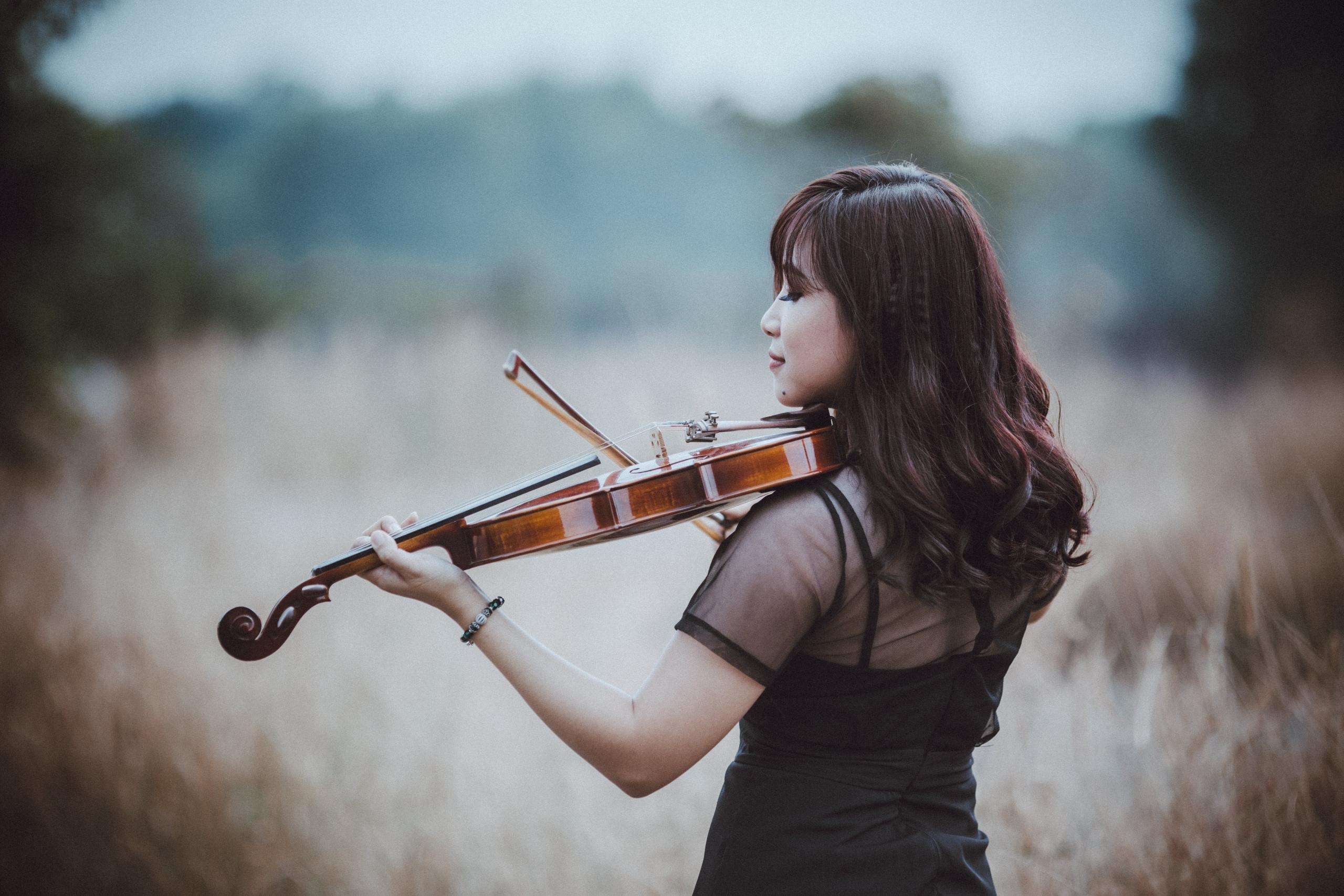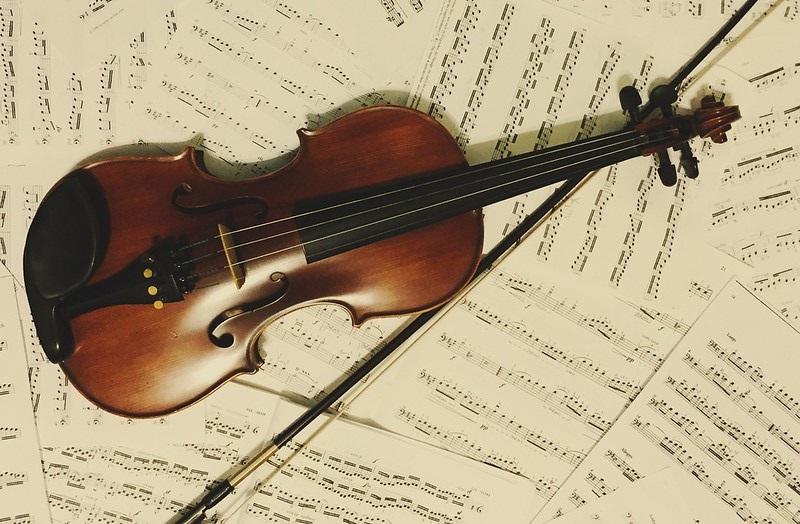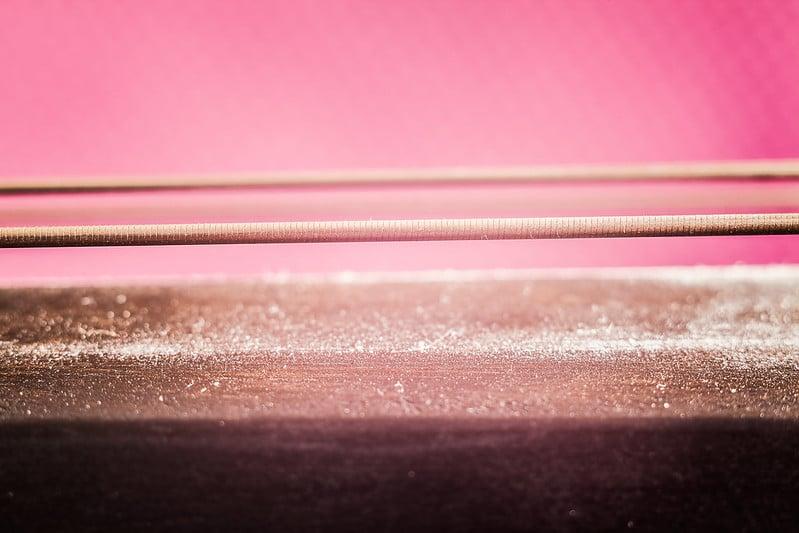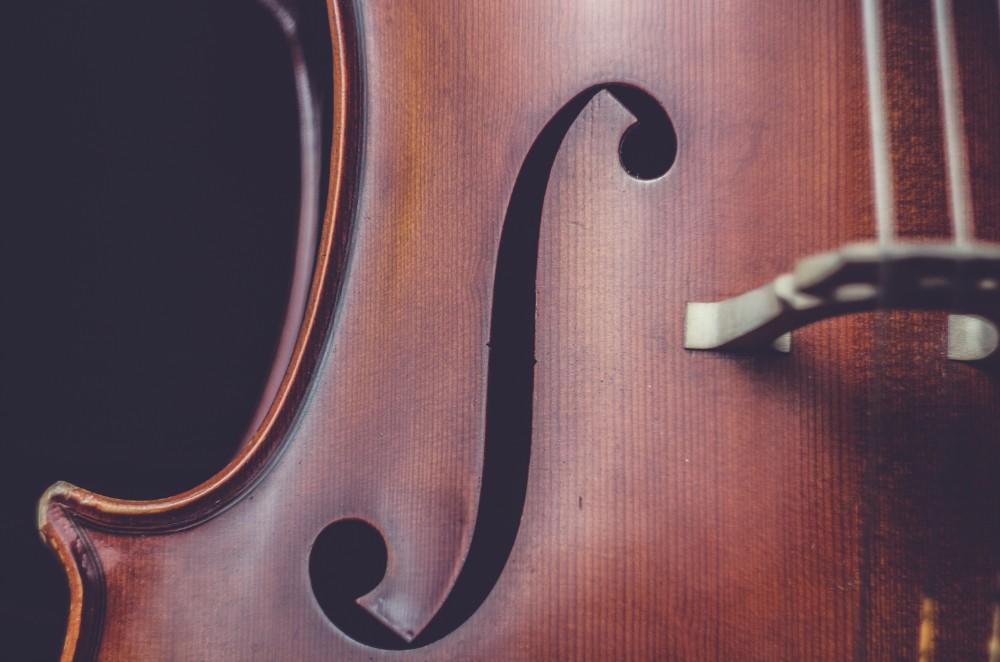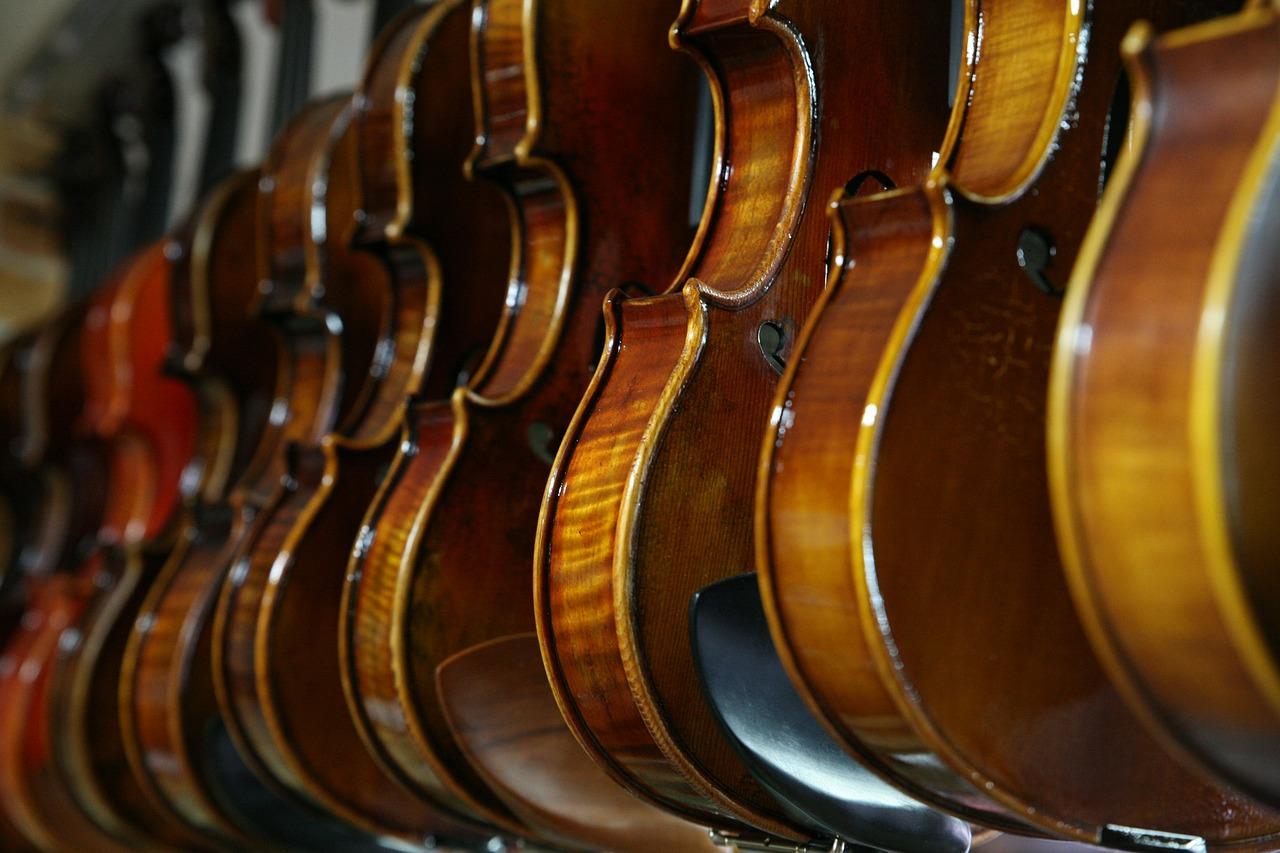Do you know what Albert Einstein and Charlie Chaplin have in common?
You probably could guess it.
Yes, both of them can play the violin.
A musical instrument that's part of the string family and with the largest number of players in an orchestra due to its versatility, the violin is certainly widely taught and learnt globally.
In this article, we will take about the unique characteristics of the violin and dive deep into the reasons on why you should learn the violin.

Violin vs Viola, What're The Similarities & Differences?
We have slightly mentioned the string family earlier. Another musical instrument that is usually associated with the violin is the viola. In fact, they look the same from afar.
Keep your eyes peeled as we review the similarities and differences between these two string instruments.
Size and weight
The most obvious difference is that the viola is bigger than the violin. The full size of a viola is between 39.37cm to 41.91 cm while the full size of a violin is between 33.02 cm to 35.56 cm.
In terms of weight, a full-size viola weighs around 580g while a full-size violin weighs around 460g, on average.
That's why the bow sizes of the viola and violin are also different from one another to produce the desired sound according to the instrument's size.
Strings and notes
In terms of similarities, both the violin and viola have four strings. Having said that, the string thickness differs due to the size of the instruments.
The four strings on the violin are the E string (the highest note), A string, D string and G string. On the other hand, the four strings on the viola are the A string (the highest note), D string, G string and C string.
On the other hand, when it comes to reading the notes, the violin uses the treble clef, while the viola uses the alto clef.
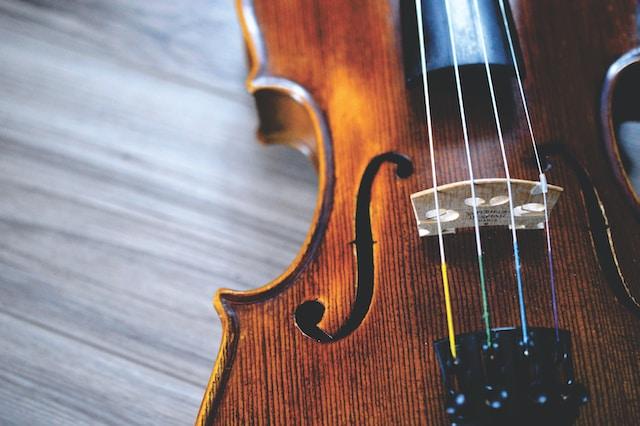
Photo by Providence Doucet on Unsplash
Sound range
In general, the violin will produce a higher-pitched sound as compared to the viola, making it a versatile solo instrument.
The viola produces a lower-pitched sound and plays a vital role as the "harmoniser" between the violin and other lower-pitched string instruments like the cello and the double bass.
There are musicians who can switch between the violin and the viola. However, it does require intentional effort to adjust to different fingerings and familiarity with the strings and notes.
Continue reading to learn more and be inspired by some famous violin players.
Professional Violinists That Have Performed For Famous Figures/In Mainstream Media
Just as we have mentioned big names like Albert Einstein and Charlie Chaplin in our introduction, we certainly cannot miss out on individuals who are violinists by profession.
Here are three violinists who have made a name for themselves on the global stage.
Itzhak Perlman
Do you know that Itzhak Perlman is one of the few violinists that have performed in front of the late Queen Elizabeth and the Duke of Edinburgh?
Not only that, he has also won 16 Grammy Awards and went on to become a globally acclaimed conductor and speaker.
Born in 1945, he is still an active performing violinist (such inspiration at the age of 77 years!) and has released many albums.
Joshua Bell
Some of you may have known Joshua Bell from the famous social experiment when he was busking on the subway and only one passerby recognised him.
Violin fans would know that Joshua Bell is a big name in the violin scene where he performed at Carnegie for the first time at the young age of 17.
He has also participated in several film scores in Hollywood.
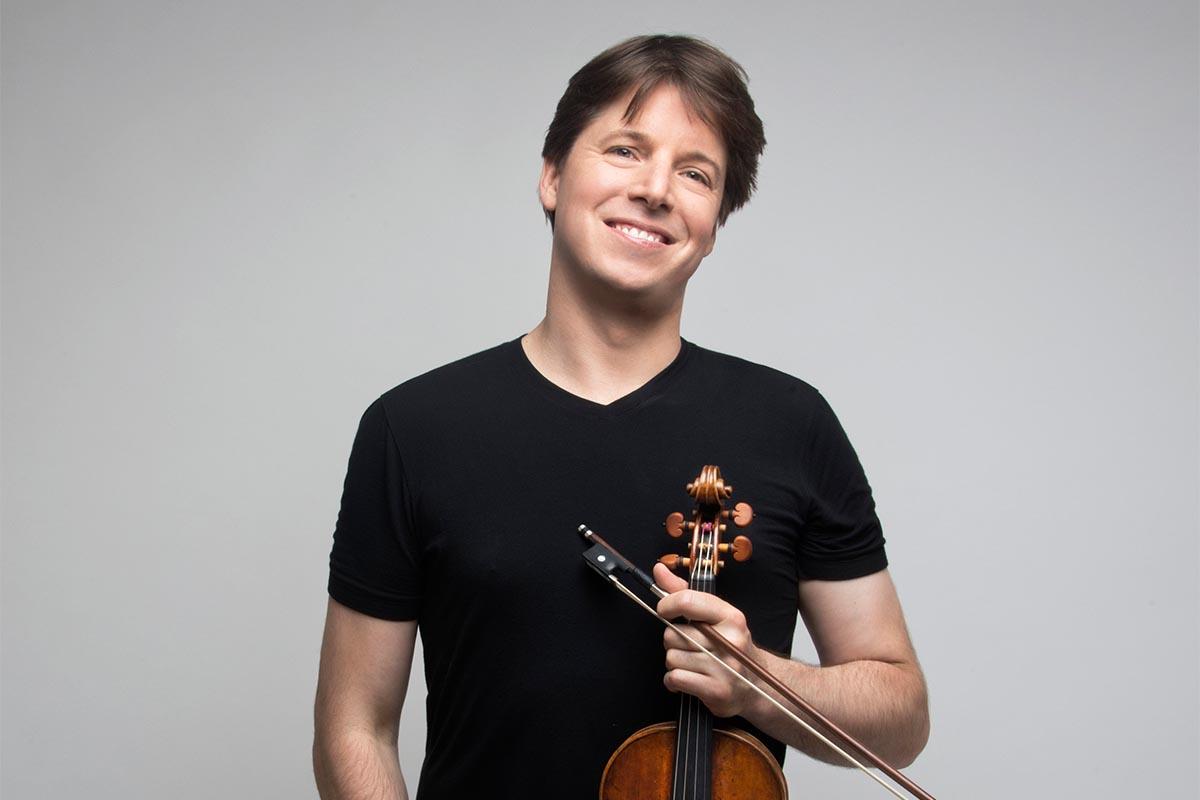
Source: New York Philharmonic
Lindsey Sterling
Fans of the reality show, America's Got Talent might recognise Lindsey Sterling during her audition in 2010.
An artists who loves to incorporate diverse genres in her violin performance, she quickly became a household name among music lovers.
She also uses the electric violin in some of her performances and album recordings.

Why Should You Learn Violin As A Hobby?
Now that you have reviewed some of the performances and achievements that one can achieve as a professional violinist, you might wonder what's in store for you.
Maybe you just want to pick up the violin as a hobby. That's totally fine. Here are three reasons why.
Reason 1: It's easy to bring around
It is small in size, light in weight and easily kept in a violin case wherever you go.
It does not matter if you are travelling by car, public transportation or plane, you can bring and play YOUR VIOLIN anywhere and anytime you like.
Also, you don't need to find a power supply to get the instrument started. As long as you tune the violin before you play and have decent rosin to make the violin bow grip the strings better, you're good to go.
Reason 2: It trains your hand and brain coordination
Whether it is the various fingering methods to the bowing techniques, both your left and right hand will be super busy as you are playing a piece.
And let's not forget your brain that is coordinating everything as you are reading the notes too. From recognising the notes, and playing different variations of the violin to memorising an entire violin solo piece, playing the violin on a regular basis keeps your brain healthy.
Reason 3: It allows you to dive deep into your emotions and be a better communicator
When you play the violin, it is more than just a technical act on repeat, but it is also an engaging storytelling process.
You need to look at the notes through a different lens and play it with an understanding of the background of the piece and also add a bit of your own interpretation too.
In a way, it allows you to express and release your emotions in the most creative manner.
The more you play, the more you comfortable you will be with performing and connecting with people. Whether it is collaborating with someone in an ensemble for a performance or playing the violin on the streets, you are building a bridge to share the beauty of violin playing.
All these little moments will one day become some of your most beautiful memories and experiences.
4 Things To Pay Attention To When You Learn Violin As A Beginner
If you are learning to play the violin for the first time, here are four tips that you should take note of.
#1: Make sure you are comfortable with your violin
As you shop for your first violin, it is important to check if you are comfortable with the size and the wood quality before purchasing it.
#2: Take time to master the right bowing posture and fingering
As you begin your first month of violin lessons, be patient and do not rush through the basics.
Having said that, make sure you truly understand how to perform various bowing techniques alongside the right fingering as you are playing from the first to the fourth finger.
When you have fully memorised the right way to play the notes, you can soon progress from simple to more advanced pieces confidently.
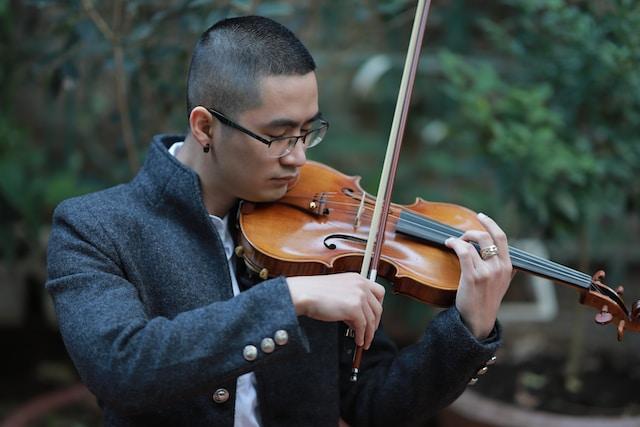
Photo by Khanh Tu Nguyen Huy on Unsplash
#3: Listen to the tone of the played notes
As you are adjusting the violin bow, pay attention to the pitch and clarity of the sound that is produced.
You can always double-check with your violin tutor or hit the piano notes to check if you are playing the right notes.
As you advanced to the next level of learning, you will be guided on how to make your violin-playing sound richer and more in-depth.
#4: Practice consistently
It's okay to sound terrible during your first few violin lessons. As a matter of fact, it's completely normal.
Both of your hands need to work in perfect harmony to create a beautiful symphony and that takes time. Once you have a strong foundation, you will certainly gain momentum in the subsequent lessons and practices.
Remember, the more you practice, the better you'll get in time. Don't give up!
Have A Flexible Violin Learning Experience With Superprof
Gone are the days when you need to go out to search high and low for a good violin tutor.
With Superprof, you can do it in just a few clicks, in the comfort of your home. Learning to play the violin has never been so easy!
You can have a flexible and effective violin learning experience thanks to these two main reasons.
Personalised lessons according to your level and pace
Having a violin tutor allows you to discuss about your violin lessons in detail, where you can adjust your learning syllabus and scope according to your interest and current ability. There's no pressure whatsoever!
Physical/Online lessons- Your choice
At Superprof, you are free to hire violin tutors to have lessons at your home in person or have 100% online lessons.
All you need to do is just indicate your current city or preferred learning mode as you are browsing the tutors' profiles on the Superprof homepage. Online lessons also tend to be more cost-effective in the long run too!
So what are you waiting for?
This article is a sign for you to explore the possibilities of taking up the violin and begin an adventure of endless charm and possibilities!
“I know that the most joy in my life has come to me from my violin.” -Albert Einstein

